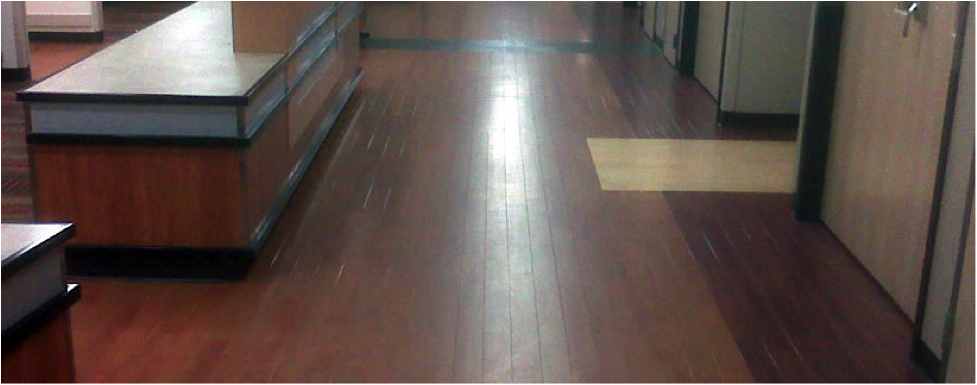One of the fastest growing floor surfaces being installed in North America is Luxury Vinyl Tile (LVT). We have all seen it, synthetic vinyl surfaces manufactured to look like natural stone, marble, wood, or other exotic ceramic tiles. The possibilities are endless when it comes to LVT. As these floor surfaces continue to gain popularity in the institutional market, facility managers struggle to develop the proper care and maintenance procedures to ensure their LVT floors look as good in year five as they did on day one.
 Basic Floor Care
Basic Floor Care
The first step to maintaining any floor surface is to prevent dirt and debris from entering the facility in the first place, and LVT is no exception. Every entrance to the building should have some type of matting system to capture soil before it tracks onto the floor. As floor matting goes, more is always better. This is a cheap and easy way to extend the life of any floor surface.
Daily Routine Maintenance for LVT Flooring
Regular maintenance is very similar for LVT when compared to traditional flooring. Dry sweep or dust mop the floors on a daily basis and then damp mop the floor with a mild neutral cleaner, such as daily cleaners with a pH of 7, or better yet, a neutral peroxide cleaner. Most peroxide cleaners are not only safe for the environment, but can be used on a variety of hard surfaces and carpet. There are even peroxide cleaners that disinfect while they clean. The last rule of thumb for regular maintenance is to clean spills as quickly as possible, not only to protect the flooring, but also to reduce the potential for slip and fall accidents.
Aggressive Cleaning For Smooth LVT
More aggressive routine cleaning will be required if you want to keep your LVT floor looking as good as possible. For smooth LVT surfaces, use a rotary disk automatic scrubber equipped with a light scrub pad and neutral or peroxide cleaner. The combination of mechanical agitation and vacuum extraction with the automatic scrubber will remove the dirt left behind from your daily mopping process.
Routine Cleaning For Textured LVT
Routine cleaning for textured LVT is slightly different. In this case, your automatic scrubber should be equipped with a light duty all-purpose scrub brush.

Again, use a neutral cleaner or preferably a peroxide-based cleaner in the machine. The brush will do a much better job of scrubbing in the textured recesses of the floor and the vacuum motor on the scrubber will lift the solution and suspended soils from these areas. Textured LVT has a very refined look, however, if not cleaned properly it can quickly lose its luster and appeal from the dirt and debris that collects in the valleys of these textured areas.
Coating LVT Flooring
Some manufacturers recommend that LVT products be coated with a protective layer of floor finish. This process provides protection for the surface and increases gloss level. However, there are a few concerns with coating LVT, which includes effective floor finish adhesion and eventually stripping the finish without damaging the tile.
Not all floor finishes will adhere to LVT tile and not all LVT tiles allow finishes to adhere to them. The best practice is to test finishes for adhesion in an inconspicuous area first.
Inevitably, a coated LVT floor will need to have the finish stripped off at some point during its lifecycle. You should be aware that chemical stripping solutions may cause discoloration or other damage to some LVT products. The best advice is to follow the manufacturer’s recommendation for coatings and stripping. If you are not sure which products are compatible, test them in a discreet location before coating the entire surface. This will help prevent a major crisis years down the road.
Keep in mind that there are many different types and styles of LVT flooring being developed, so these recommendations should be used a general guideline. Your actual procedures may vary depending on the specific type of floor that is installed in your facility.